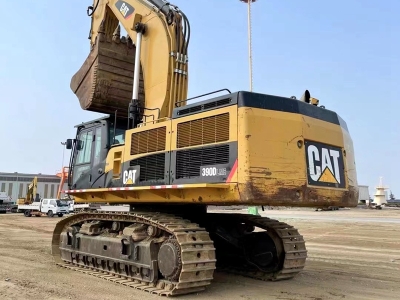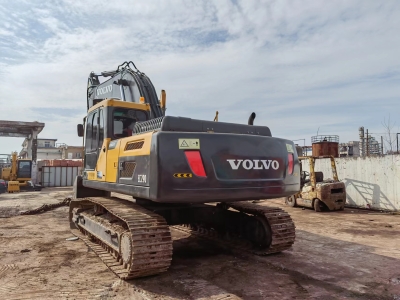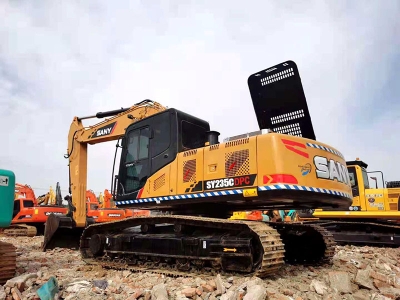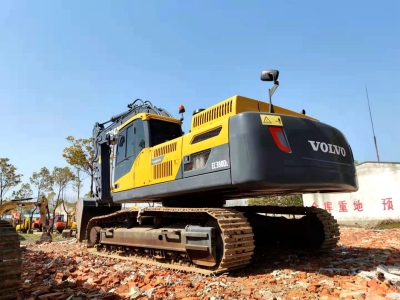EXCAVATOR SAFETY TIPS: BEFORE, DURING AND AFTER OPERATION
22 February 2023 Reading Volume: 0
Also known as diggers, excavators consist of a boom, dipper or stick, bucket, and cab on a rotating platform known as the upper structure or revolving frame. This upper structure sits on the top of an undercarriage with tracks or wheels. Excavators fall under the heavy equipment category and like any other heavy equipment, they are costly and hence, need to be safely operated and properly maintained so as to boost their life. If you are a contractor or a construction company owner or an excavator operator, then you might agree that adherence to the safety and maintenance tips not only keep the equipment in the good condition but give you peace of mind too that the equipment will not show signs of depreciation too early and can be used efficiently for years together with high uptime. Further, observance of safety tips can also increase job site safety. So what are these excavator safety tips? Well, here is a look at those excavator safety tips for before, during, and after the operation.
Safety tips before the operation
Read the operators’ manual to get familiar with the controls of the equipment.
Read the warning labels and stickers as well as maintenance information, specification charts, and other important information posted around the machine.
Visually inspect controls, engine compartment, undercarriage parts, hydraulic parts, and other parts and see that everything is in proper condition.
Check that mirrors are clean and set properly.
Check all the attachments of the excavator. See if everything is in its proper place.
Check the track system as well before operating the excavator so that accidents can be prevented at the Jobsite.
Walk around the equipment and check loose bolts, trash build-up, oil leaks, or damaged parts.
Always ensure that all the safety equipment is working and clean.
Make it a point to know and understand the width of the machine in order to maintain proper clearances from surrounding obstacles and obstructions.
Switch on the key and check for any diagnostic codes or warning alerts that are active. Rectify the code before starting the operation.
Test the equipment thoroughly before the operation to check its condition and effectiveness.
Always use seat belts as they are provided for comfort and safety.
Check with the concerned person if there are any underground lines or structures at the job site. Excavators should never be used too close to the edge of trench.
Safety tips during operation
Excavators have only one seat where the operator should sit, apart from that no one should be allowed in the bucket, cab or anywhere else on the machine.
Don’t start the equipment before you are in full control.
Match speed with job conditions.
The excavator speed should be reduced while working on rough terrain or within congested areas.
The bucket should be kept lower to the ground during transportation as this can increase visibility and machine stability.
The flat route should be selected as far as possible when moving the excavator around the Jobsite.
The equipment should be steered as straight as possible and only small gradual changes in the direction should be made when turning is needed.
On travelling up the slopes, the equipment should be moved vertically instead of diagonally.
The boom and arm should be extended with the bucket lowered and rolled out when driving up the slopes. This can help in dropping the bucket and preventing the equipment from sliding.
The bucket bottom should be kept low and parallel to the ground when moving down the slope.
In very slippery conditions, boom and arm can be used to move up and down the slope. The boom and arm can be extended when going up a steep slope and when needed, the bucket should be lowered and the arm should be retracted to pull the machine up. The bucket can be positioned with the flat surface resting on the ground when traveling down a steep slope. While retracting the arm, the boom should be raised and the machine should be propelled until the front of the tracks reach ground level.
In case of using the excavator for trenching, the equipment should be leveled by placing dirt underneath the tracks.
In order to achieve better stability, you need to work with the propel motors to the rear of the machine.
The soil should be dumped as far as possible from the excavation site so as to avoid possible cave-ins.
When excavation needs to be done on slopes, then the machine should be leveled by digging a shelf (or a bench cut).
On steep bench cuts, you need to cut appropriately away from the upper bank to allow for adequate swing clearance when casting down the slope.
You should never dig underneath the excavator.
The excavator’s tracks should be at a 90-degree angle to the excavation with the propel motors to the rear of the machine, in case of backfilling tasks.
You need to ensure that you don’t clean the excavator’s bucket by striking it on the ground or against another object.
You should not bang the bucket on the ground for breaking the

 English
English








